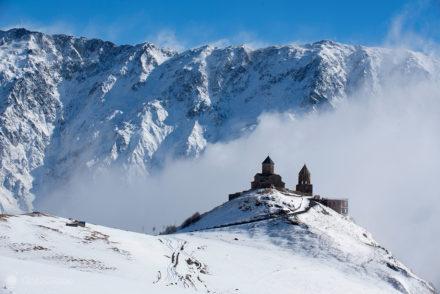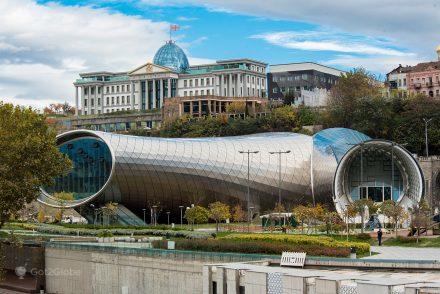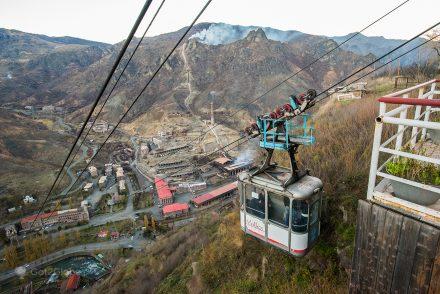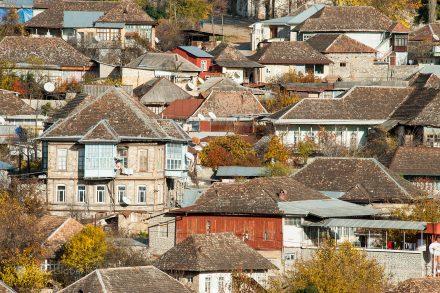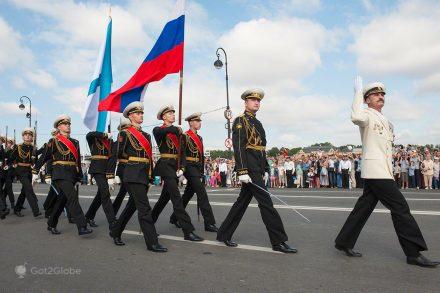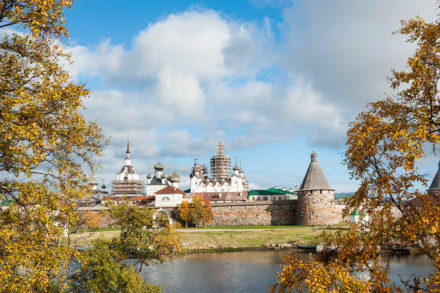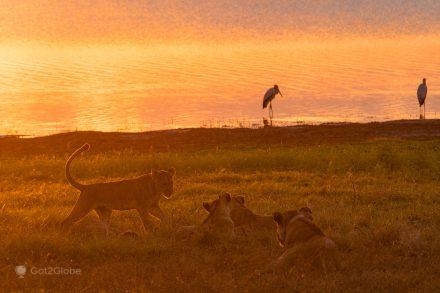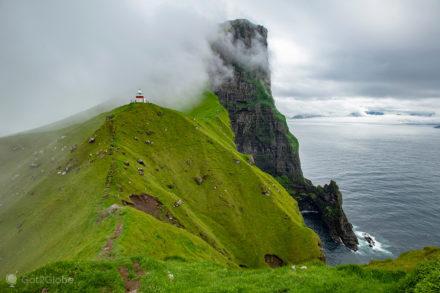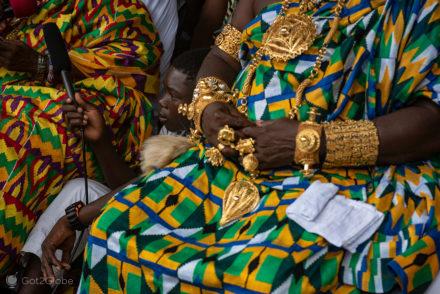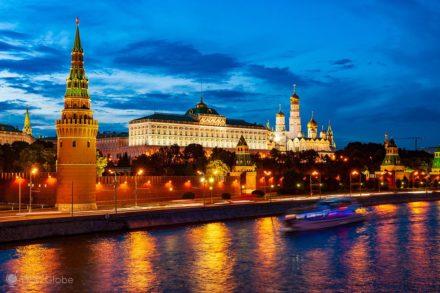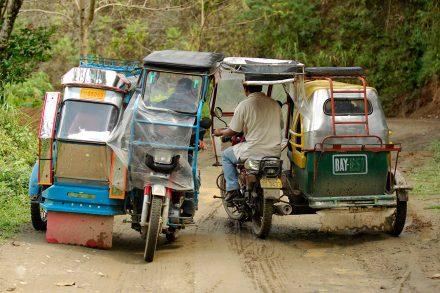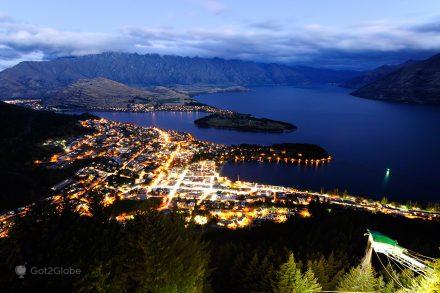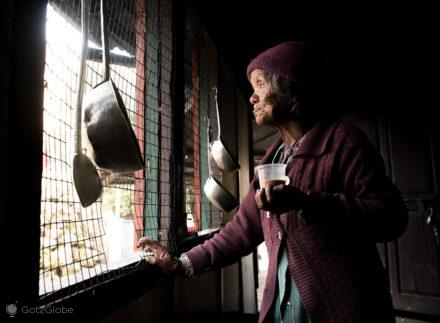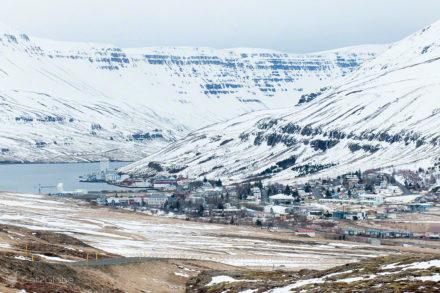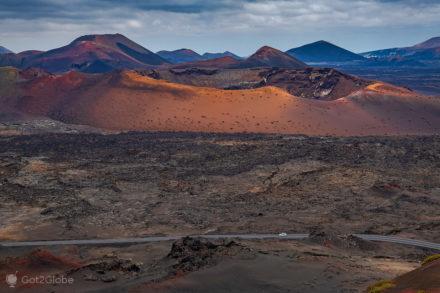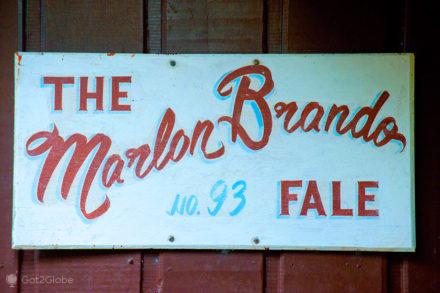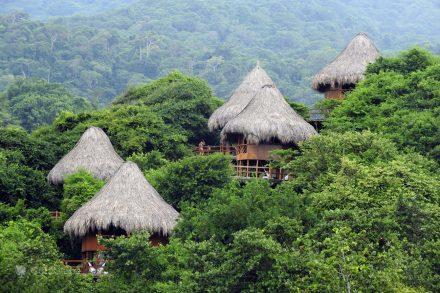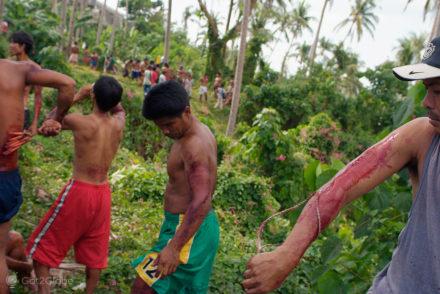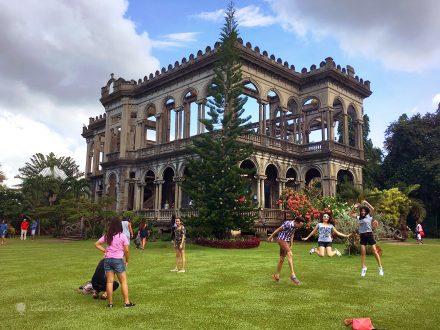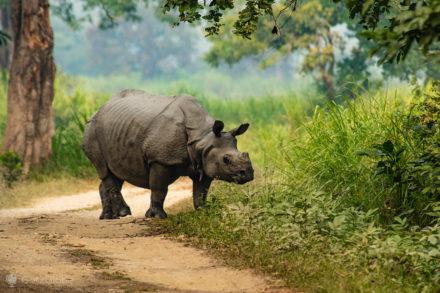When we think that we have the geography and history of Europe well established, Tamo Giorgadze forces us to retrieve from the depths of our memory a kingdom of Caucasian Iberia from other times.
And we surrender to the infinity of knowledge.
"It was what the Greeks and Romans called this region that gave us the origin of the Georgians of the East." The etymology has nothing to do with that of our Iberia. The one in those parts is also the subject of several theories and arguments. Anyway, as with everyone, the kingdom lasted as long as it did.
“We're not even called Georgia, this is for you,” underlines Tamo as we make our way through the countryside between Mtskheta and Gori.
For us, Georgia is Sakartvelo, from another contemporary name in the Iberia region, Kartli. It was the Greeks who began to call these parts Georgia (from the Hellenic georgicus: agricultural) because of the skill with which the people here cultivated the land. In the image of countless Greek terms of the time, this one became popular in most of Europe”.
We take a motorway along a wide valley, overlooking the borders of newly rebelled South Ossetia. It's still early when we turn off to Gori.
At the confluence of the Kur Sayi and Liakvhi rivers, the city remains in a thick fog. Dissatisfied with its diffuse contours, we decided to pass through Uplistsikhe, hoping for a more favorable weather for those parts.
We follow a surreal path lost between soaked forests, riverside hamlets and ex-Soviet railway suburbs in full symbiosis with other environments. In one of these rural and marginal villages, elderly people with rough faces indulge in lengthy conversations, bundled up against all the weather.
The Autumnal Path to Uplistsikhe
Sheep and goats for good will share the road with BMWs and Audis imported from Germany and more than used, trophies of an effortful emigration and already almost unavoidable among young Georgians with little literacy.
We crossed another river, the Mtkvari, by a shallow iron bridge over a vast alluvial plain. We then realized that we had won the weather bet.
Under the action of the wind and the sun's rays, the clouds and the patches of fog give way to a sky that turns blue before one's eyes.
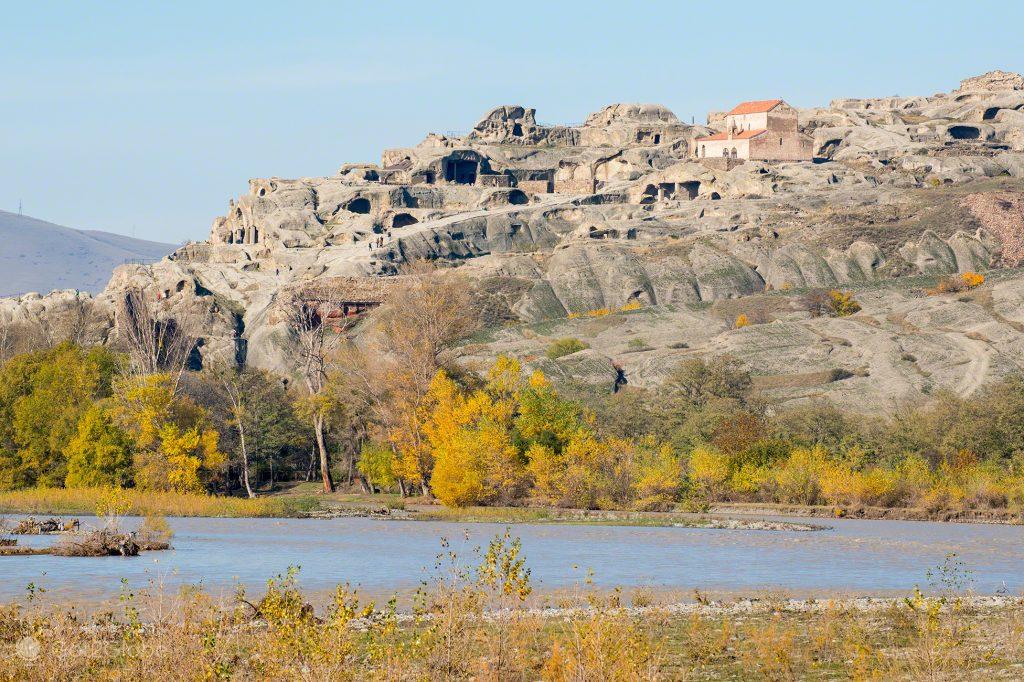
Uplistsikhe, on the other side of the Mtkvar River, between banks yellowed by autumnal vegetation.
When we reach the entrance to the Uplistsikhe complex, the soft light seems to ignite the yellowish trees all around. Secure us with delicious caresses.
On the left bank of the Mtkvari rises a bare rocky slope. We ascend it by wooden stairs and narrow paths until we glimpse, in the distance, the most outstanding and emblematic building of the village, a basilica with three naves.
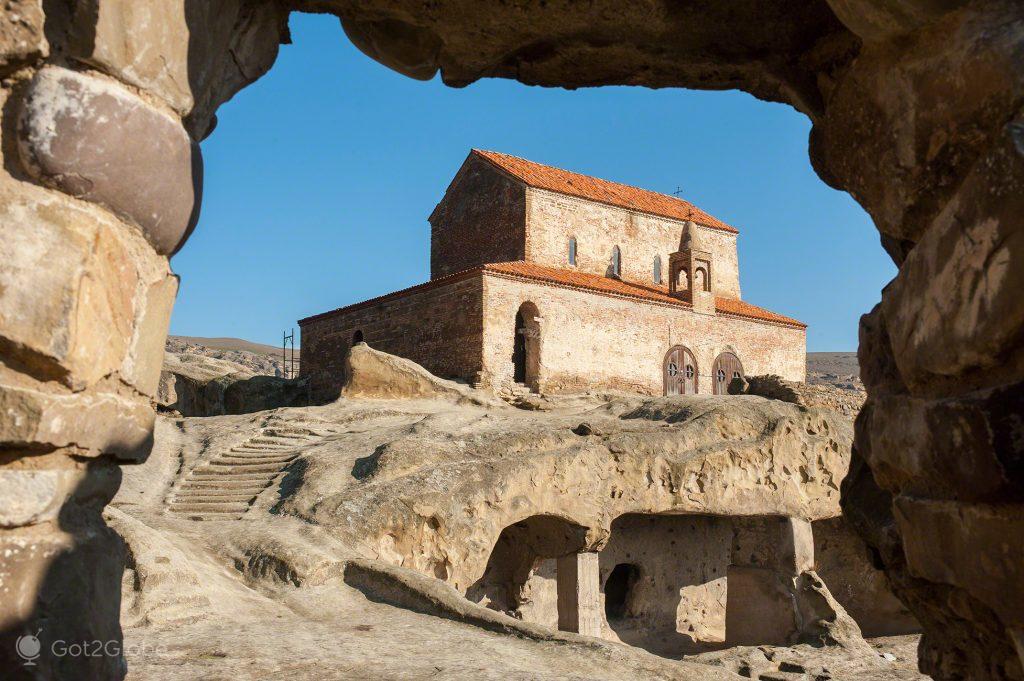
The three-nave basilica of Uplistsikhe, built in the ninth century, above the pre-Christian troglodyte settlement.
We get closer and Tamo rescues us from the photographic dispersion in which we almost always get lost in new places.
Georgia's Troglodyte Genesis
He explains that it was built on top of a fascinating troglodyte complex, with structures inhabited and used from the late Bronze Age to the late Middle Ages, by pagan and Christian cultures from the Anatolian and Persia area.
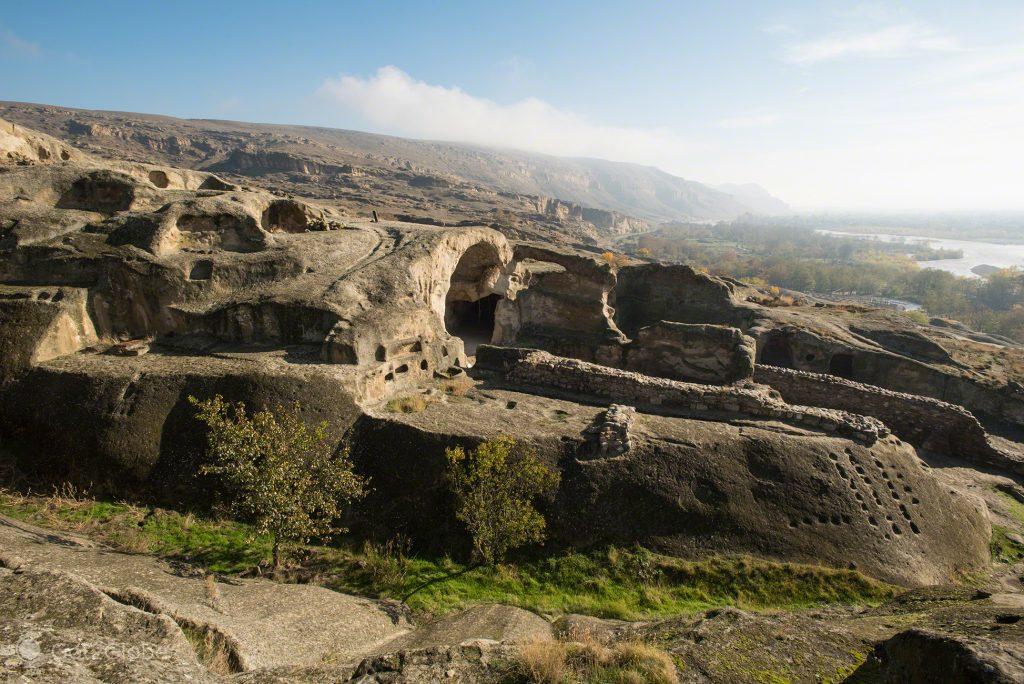
Makeshift rock shelters in the troglodyte village of Uplistsikhe.
“Get here” asks Tamo. “See these little channels carved into the ground? When we tell you that Georgia is the winemaking cradle of the world, it is for you to take it seriously. Check it out! Uplistsikhe was at its height in the 9th to 11th centuries AD Before that, they were already making wine here”.
In addition to the mill carved into the rock, the village of almost eight hectares was endowed with dwellings and communal and ceremonial spaces connected by rails and stairs derived from a small central avenue.
We climbed to the top of the cliffs, even higher than the basilica.
From there, we contemplated the slow, muddy meandering of the Mtkvari, colored by yellowish or green bushes and, on a grassy slope, the strange sight of crumbling walls and an adjoining huddled farmhouse, still operational but seemingly forever lost in time.
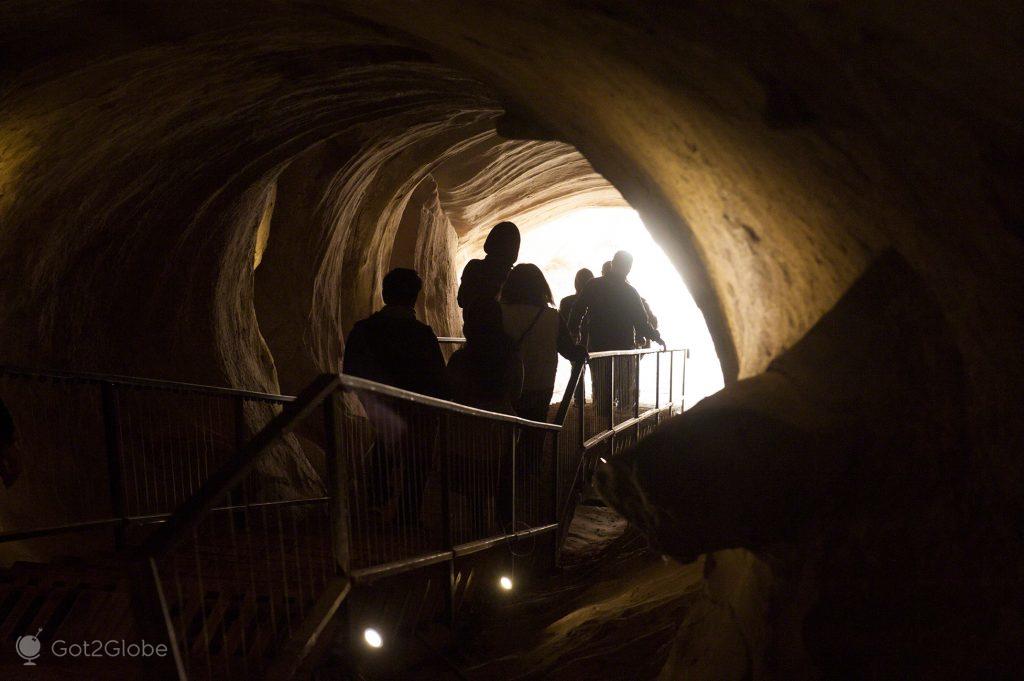
Visitors from Uplistsikhe walk through one of the underground passages that served the troglodyte settlement.
In the meantime, we abandoned Uplistsikhe. Tamo insisted that we do so through a “secret” tunnel that led us back to the complex's entrance through the rocky and tenebrous depths of the Caucasus.
Gori and His Controversial Son Joseb Stalin
On the way out, the day turned out to be radiant. We had to go back to Gori to see if the fog had lifted there too, which was confirmed.
For Georgians, Gori is synonymous with a man. He was born in the city with the name of Joseb Jughashvili, son of a shoemaker and a maid. As a child and teenager, Joseb suffered from various ailments and traumas.
She had two toes of her left foot joined together, her face was scarred from smallpox, and her left arm was shorter and stiffer than her right from a buggy accident.
His father, Besarion, became alcoholic and violent towards the small family and soon lost his modest business. Ketevan Geladze – Joseb's mother – delivered her son to an Orthodox monastery.
When her husband found out, he went crazy, and attacked Gori's police chief. He ended up banned from the city, where he abandoned his wife and descendant.
By then, no one would bet a ruble on Joseb. The boy's path came to surprise everyone and everything by revealing himself to be a determined and Machiavellian revolutionary leader.
The Inexorable Rise of the Soviet Communist Party
When Vladimir Ilych Lenin formed the Bolshevik faction of the Marxist Labor Party, Joseb enlisted. Shortly thereafter, he adopted the name Joseph Stalin in his writings. It has proven effective in almost every kind of intellectual and practical role, from writing and distributing advertising to raising funds through extortion, robbery and murder.
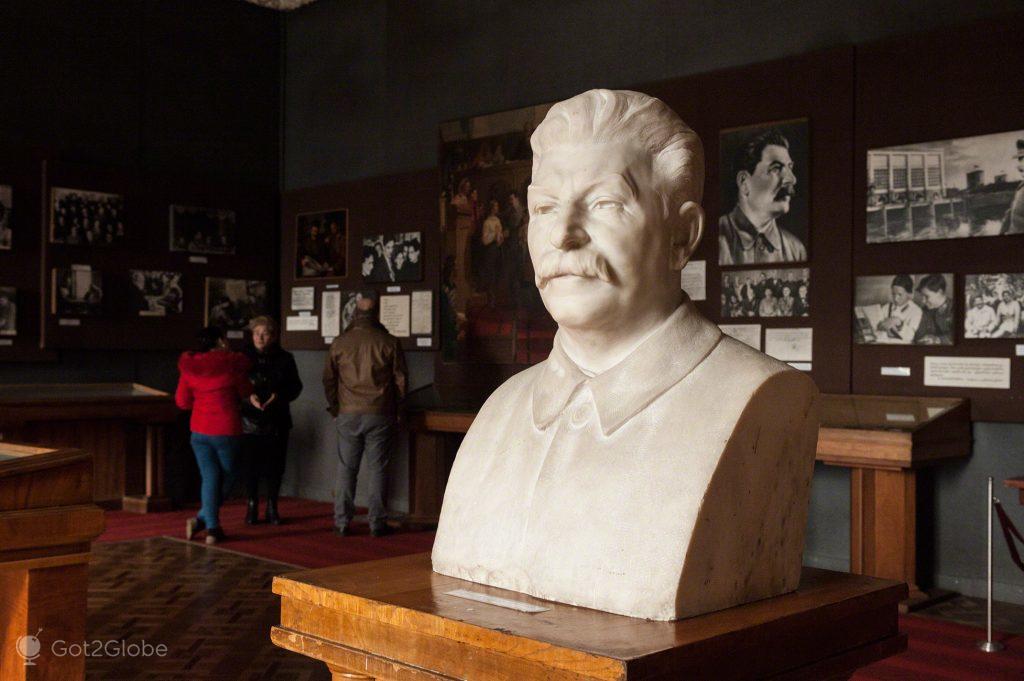
Stalin's bust prominently in the center of one of the rooms of the museum dedicated to him in Gori, his native land.
After the Russian Civil War of 1917-19 and several ideological clashes with rival Leon Trostky, Stalin won the support of the increasingly weakened Lenin for the appointment of General Secretary of the Communist Party of the Soviet Union. It did not take long to gain almost absolute power.
In the first moments, against Lenin's own will, with whom, however, he also broke up. This power lasted from 1922 to 1952. As is known today, Stalin exercised it in such a cruel way that it caused the death of millions of compatriots from various republics of the USSR, and of many other victims from other countries during imperialist and expansionist military conflicts.
We had already been to several ex-Soviet places where that suffering and, soon, charismatic, manipulative and despot character had left a trail. In his native Gori, we had a plan to understand him a little better.
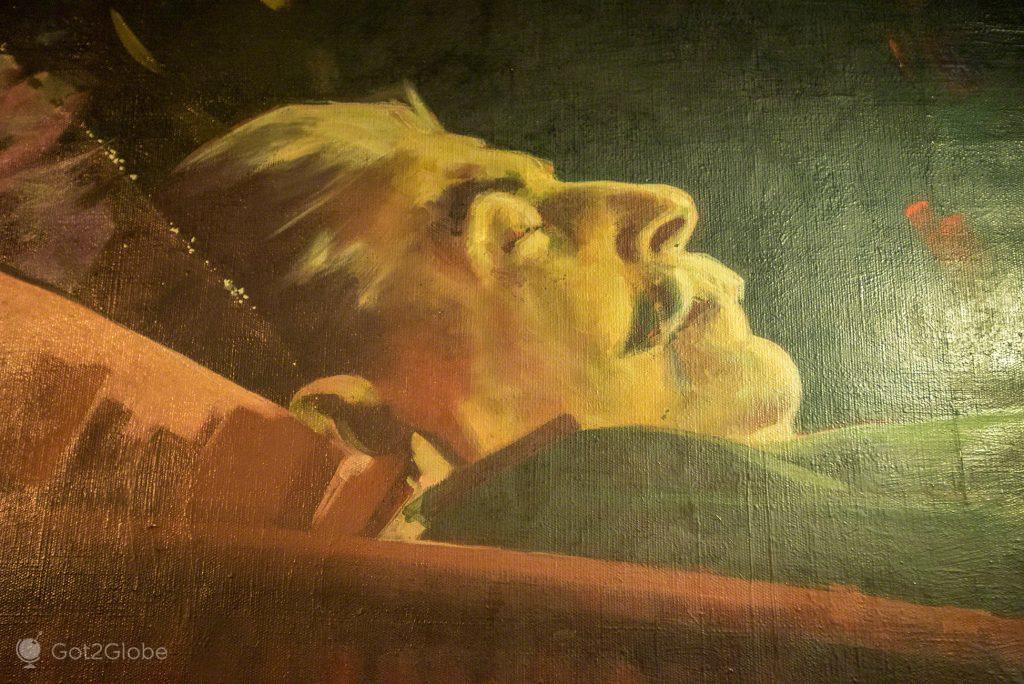
A funeral painting by Stalin.
The heart of the city is still Stalin's despite the 1960s Kremlin campaign to banish it from memory, the 2008 Russian bombings during the Russo-Georgian war, and heightening the enmity of the new Georgia towards powerful neighbors to the north.
Between Soviet Nostalgia and the Georgian Hate of the Russian Aggressor
In 2010 alone – 58 years after the inauguration – pro-Western Georgian President Mikheil Saaskashvili dictated the removal from the middle of Stalin Square of the statue that had so long honored the Soviet tyrant. Saaskashvili then proclaimed: "a memorial to Stalin has no place in XNUMXst century Georgia."
Another politician from his government added that requests to do so had increased exponentially since the start of Russian military aggression against Georgia. An aggression triggered by the Kremlin's support for the pretensions of secession from the territories of South Ossetia and Abkhazia.
Both with their own pro-Russian Ossetian and Abkhaz ethnic majorities but many thousands of Russian inhabitants and substantially even more Georgian – compared to newly independent Georgia.
Even so, when we walked through the heart of Gori, we came across a huge avenue, square, a tripartite museum consisting of a Stalinist Gothic-style palace, the Gori home of the Jughashvili family, the private railway carriage Stalin used to travel to everywhere for having a paranoid fear of attacks against him in midair and therefore refusing to fly.
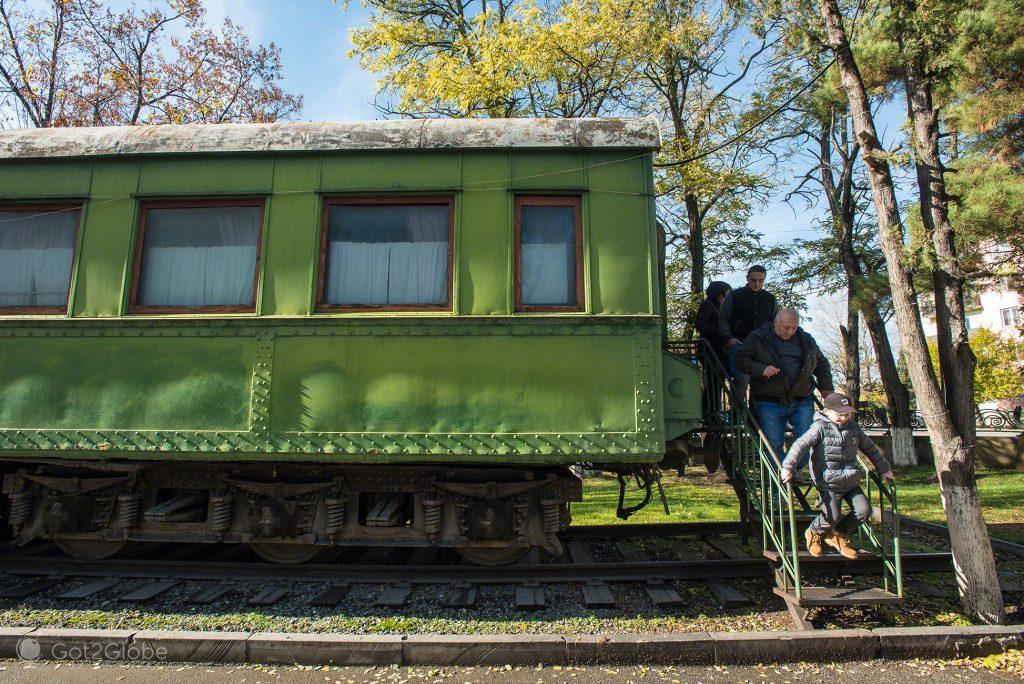
The carriage used by the Soviet dictator on his journeys. Stalin had a paranoid fear of flying.
Of these, the palace concentrates most of the elements. That's where we started and we could examine its interior for months on end, such is the panoply of maps, paintings, sculptures, furniture and objects.
Including the famous red telephone (which was obviously not red) and others that allegedly belonged to it, many of them curious offers made by heads of state and institutions from the four corners of the world.
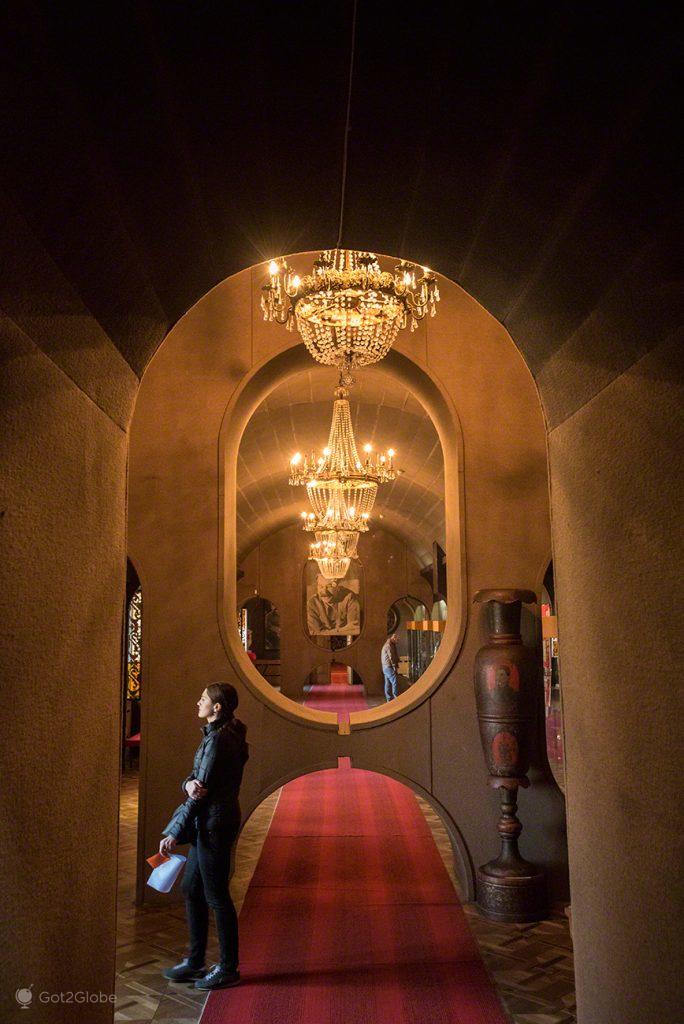
Visitors examine the room for gifts offered to Stalin.
This heritage appears organized in an approximate chronological order. It is guarded by Georgian ladies with looks to match the Soviet heritage and bored by the monotony of its long cloisters in that obsolete past.
We climb the marble staircase from the ground floor and enter the second of the rooms. One of the resident guides narrates episodes from Stalin's life in Russian to one of the Russian families who, despite the conflict in August 2008, feel once more comfortable visiting Georgia.
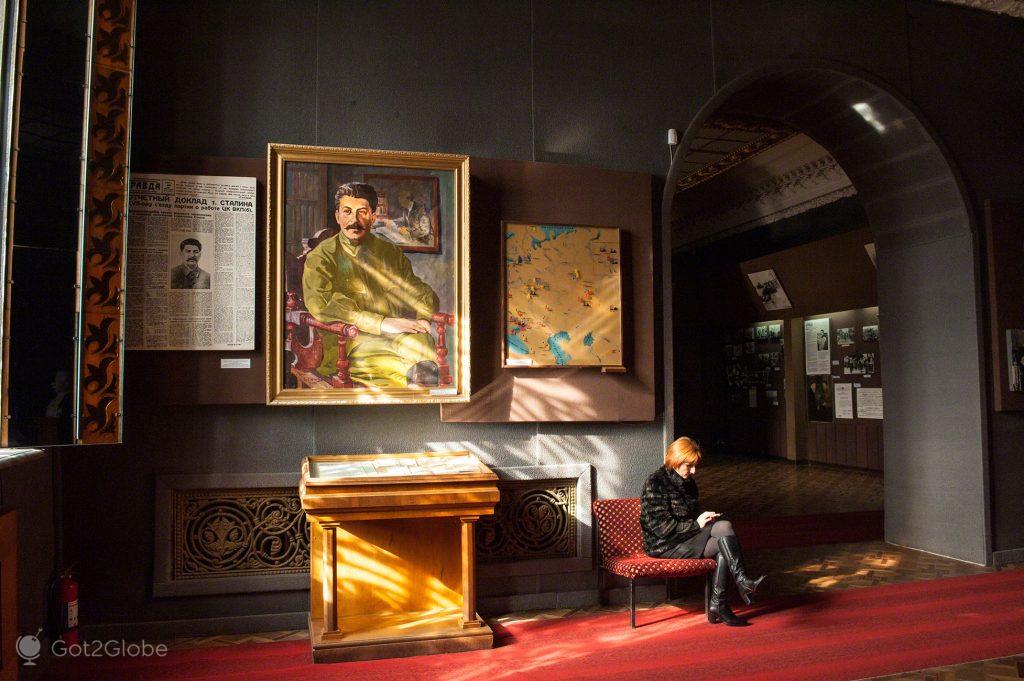
Stalin's museum employee sitting next to portrait of the dictator in military garb.
Up ahead, the sun blazes in through the stained-glass windows of a window. It lights up the red hair and pale skin of another museum guardian, dressed in a fur coat and high boots.
Seated on a felt chair, this last ward employee is the company of the dictator, who is portrayed there in a green bean military outfit and sprawled in her own wooden armchair.
Next door, in a much more dismal room, Stalin appears alone, exposed in a mournful den, composed of his death masks, paintings and funeral sculptures, among others.
Shortly after the Russian attack on Georgia in the summer of 2008 that claimed several victims in Gori, the Minister of Culture announced that the same museum we were exploring at the time would be converted into the Museum of Russian Aggression.
A few years later, a banner was placed on the door that proclaimed: “This museum is a typical example of Soviet propaganda. It seeks to legitimize the bloodiest regime in history”.
In the last days of 2012, the municipal assembly of Gori boycotted any change to the name. Some respect for the city's notorious son still seems to be felt, at least by the elders.
The Prolific Legacy of Country Stalin
Whatever his faults, Stalin preserves his place in Gori, including in one of the biggest supermarkets in the city, where his Sovietized image is highlighted just above the entrance door and in countless souvenirs for sale inside.
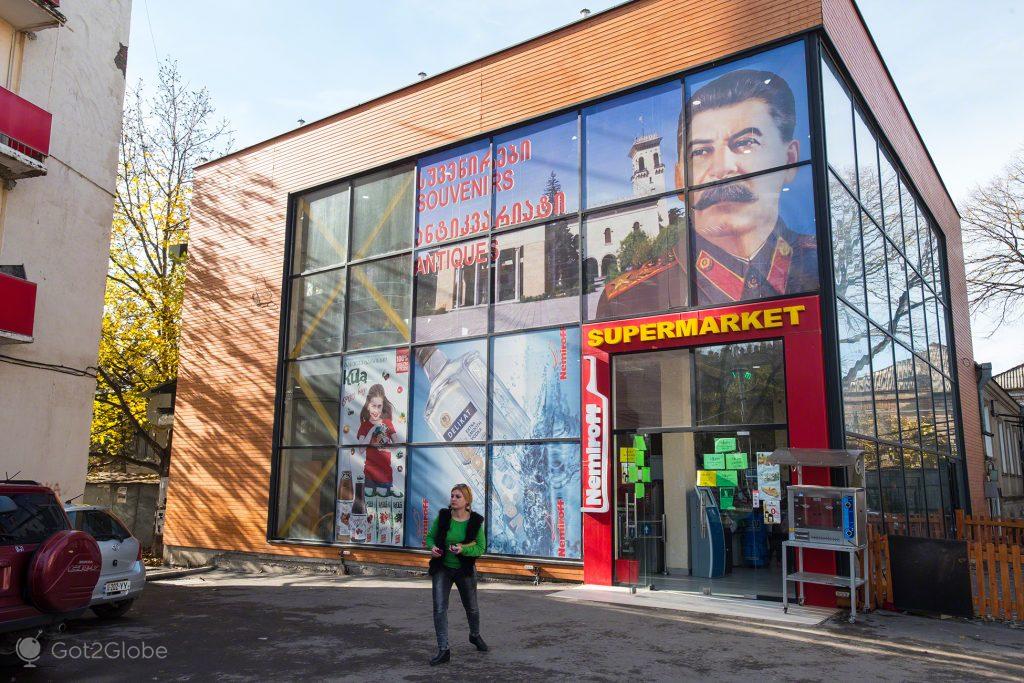
Customer leaves Nemiroff supermarket, located next to Stalin's museum, in Gori, and decorated with a military image of the dictator.
During the days we spent with her in Georgia, Tamo herself ended up venting conflicting feelings in her family about Soviet times, whether Stalin's or not. “My parents and people their age miss the USSR
And, believe it or not, many of them respect Stalin. At that time, there was always work and it was all communal. There was no time to spend it. When caramels and sweets arrived from the Turkey it was like Christmas. It was so rare! Then came independence.
Georgia entered complete chaos. My parents didn't have a job. There was no light or heating. However, the president changed, we had support from the European Union and everything improved, until in 2008, the Russia entered the scene and returned to cursing our lives. Georgia is a small country that all neighbors have long wanted to control, especially the Russians, of course.”
Despite the obvious progress of his homeland, what he tells us does not surprise us. For a brief moment, we try to compare the old red reality with the one that followed, and realize that stability and sufficiency breed more nostalgia than raw helpless freedom.
Without the association being obvious, to me – Marco C. Pereira – in particular, I immediately came to mind the ideological scrub to which my deceased maternal grandfather – who was a proud communist – submitted to me, I had some 16 years old, during a failed football game USSR. - Portugal.
The Soviets thrashed them 5-0. Around the fourth goal, all he needed was a megaphone to fill my ears more: “See? Learn that what a real country is.”













